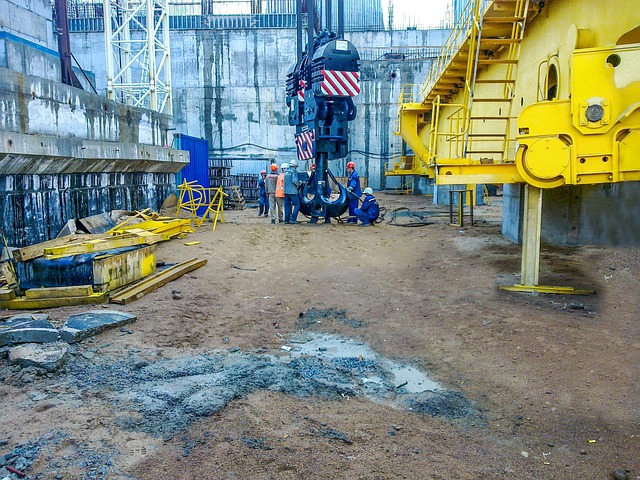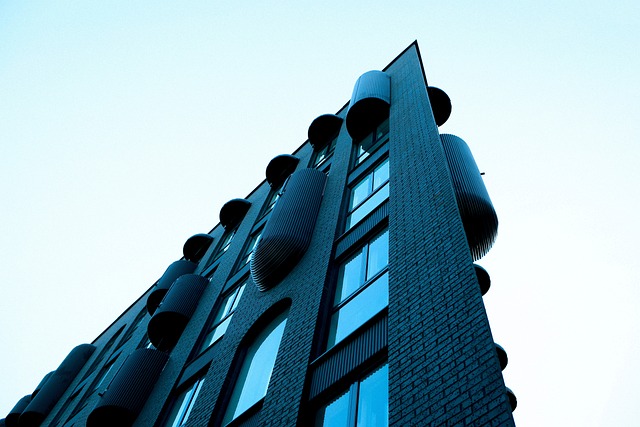Foundation leveling is crucial for addressing uneven or sinking floors common in older homes, preventing structural damage & costly repairs. Evaluating structural integrity leads to tailored solutions like piering or slab jacking, enhancing home stability and safety. Key foundation solutions include crack repair, underpinning, and piering, offering long-lasting repairs that boost property value. Regular inspections are vital for ongoing stability, safeguarding against future shifts and ensuring comfort & safety. Case studies highlight successful transformations through innovative Foundation Solutions, providing valuable insights for effective, durable repairs.
“Level up” your home with an in-depth look at Foundation Solutions—the key to stable, secure residential structures. This comprehensive guide explores common foundation issues plaguing homes and how foundation solutions offer effective repair and prevention strategies. From understanding the basics of foundation leveling to delving into various techniques and real-world case studies, discover why investing in foundation solutions is a wise decision for homeowners looking to maintain property value over time.”
Understanding Foundation Leveling: A Basic Overview

Foundation leveling is a process that addresses the issue of uneven or sinking floors, a common problem in older homes and buildings. It involves assessing the structural integrity of the foundation and implementing tailored solutions to ensure stability and levelness. By correcting these issues early, homeowners can prevent more severe structural damage and costly repairs in the future.
There are various foundation leveling techniques available, each suited to different scenarios. These include piering, which involves installing support piers beneath the foundation to distribute the load more evenly, and slab jacking, a process that lifts and levels concrete slabs by injecting polyurethane foam underneath. Foundation solutions like these not only restore structural balance but also enhance the overall stability of a residence, ensuring it remains a safe and secure living space for years to come.
Common Issues with Residential Foundations

Residential foundations are the backbone of any home, supporting its structure and ensuring stability. However, over time, various issues can arise due to environmental factors, poor construction, or aging. These problems not only affect the aesthetic appeal of a home but also compromise its structural integrity. Common foundation concerns include cracks in walls and floors, uneven floors, sinking or settling of structures, and water damage. Such issues often require immediate attention as they can lead to more severe structural damage if left unaddressed.
Foundation solutions are essential to rectify these problems effectively. From repairing cracks with advanced epoxy injections to implementing underpinning techniques for lifting and stabilizing structures, professionals offer a range of options. Modern foundation solutions employ innovative technologies and materials to ensure long-lasting repairs, enhancing the property’s value and providing homeowners with peace of mind.
The Role of Foundation Solutions in Repair and Prevention

Foundation Solutions play a pivotal role in both repairing and preventing residential leveling issues. These specialized services address the fundamental causes of uneven floors, settling, and other structural problems that can plague homes over time. By implementing effective Foundation Solutions, homeowners can not only mitigate existing damage but also safeguard their properties from future instability.
The primary focus of these solutions is to stabilize and strengthen the home’s foundation, which serves as the backbone of any structure. This involves a range of techniques such as piering, underpinning, and slab jacking. Piering, for instance, involves installing steel piers beneath the foundation to provide additional support and prevent further sinking or shifting. Underpinning is another method that strengthens the foundation by adding new support beams or walls, ensuring the structure’s integrity. These solutions not only correct existing problems but also create a robust foundation for long-term stability, enhancing the overall value and safety of the residence.
Types of Foundation Leveling Techniques

Residential leveling, or foundation leveling, is a crucial aspect of ensuring a home’s structural integrity and longevity. There are several techniques available in the realm of foundation solutions to address uneven or sinking floors. One of the most common methods involves the use of mud jackets, which are thin layers of concrete applied to the exterior of the foundation walls. This technique is often used for minor settling issues and provides a quick fix to level the home.
For more severe cases, piering and underpinning are effective foundation solutions. Piering involves installing steel piers beneath the foundation to support the weight and distribute it evenly. Underpinning, on the other hand, consists of constructing new supporting beams below the existing foundation, providing a solid base for the structure. These methods are particularly useful for older homes or those with significant settlement issues, offering long-term stability and peace of mind for homeowners.
Selecting the Right Solution for Your Home

When considering residential leveling solutions, selecting the right one for your home depends on several factors. The first step is to evaluate the current state of your foundation and identify any specific issues like settling, cracks, or unevenness. This assessment will guide you towards the most suitable foundation solutions, whether it’s piering, underpinning, or another technique.
Next, understand the unique challenges posed by your home’s location and structural design. For instance, homes in areas prone to earthquakes or heavy rainfall may require different approaches compared to those in more stable environments. Consulting with experienced professionals who can offer tailored advice based on local conditions and building codes is crucial for making an informed decision about the best residential leveling methods.
Implementation Process: Step-by-Step Guide

Implementing residential leveling solutions involves a systematic process designed to ensure structural integrity and longevity. The journey begins with an in-depth assessment, where professionals inspect the property, identifying specific issues and pinpointing problem areas. This initial step is crucial for tailoring the subsequent actions to the unique needs of each residence.
Once identified, foundation solutions are strategically deployed. These might include underpinning, where additional support is inserted beneath the structure, or mudjacking, a process that lifts and stabilizes sinking concrete. Each method addresses specific challenges, aiming to realign the property’s foundation to its original position. Regular inspections and ongoing maintenance then become integral parts of the routine, safeguarding against future shifts and ensuring the home remains level for years to come.
Benefits and Long-term Impact on Property Value

Investments in residential leveling solutions, often facilitated by foundation solutions, offer a range of benefits that extend far beyond immediate structural improvements. By addressing underlying issues like settling foundations, uneven floors, or sinking slabs, these interventions enhance the overall stability and longevity of a property. This not only mitigates further damage but also significantly increases the safety and comfort for residents.
In the long term, residential leveling solutions contribute positively to property value. A well-maintained and structurally sound home is more attractive to potential buyers, leading to higher resale values. Moreover, as these improvements often increase the efficiency of plumbing, electrical, and heating systems by eliminating costly repairs caused by foundation issues, they represent a smart investment that can pay dividends for years to come.
Case Studies: Real-world Success Stories

In the realm of residential leveling, case studies offer tangible evidence of successful transformations. These real-world success stories showcase how innovative foundation solutions can address various challenges, from settling soils to structural damage. By examining these cases, homeowners and professionals alike gain valuable insights into effective and durable repairs.
For instance, many case studies highlight the implementation of advanced underpinning techniques, where steel beams and piles are strategically placed to stabilize existing foundations. This method has proven successful in preventing further settlement and ensuring the long-term integrity of structures. Additionally, some projects involve the use of resin injection to fill cracks and gaps, providing a powerful solution for strengthening and protecting foundations against water intrusion and soil erosion.
